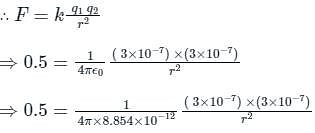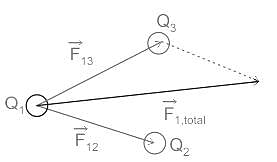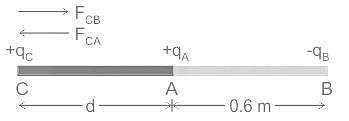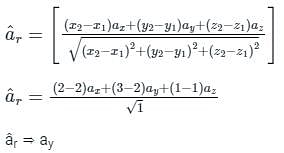Test: Coulomb's Law - Electrical Engineering (EE) MCQ
10 Questions MCQ Test Electromagnetic Fields Theory (EMFT) - Test: Coulomb's Law
If two same charges are 3 x 10-7 C and acted upon by a force of 0.5N. Determine the distance between them, if both the charges are in a vacuum.
| 1 Crore+ students have signed up on EduRev. Have you? Download the App |
The electric field of a point charge is a linear function of the value of the charge. It is the principle applied to an electric field and states that the total resultant field at a point is the vector sum of the individual components of the field at a point. Identify the principle mentioned in the context.
Two charges of + 4 μC and -16 μC are separated from each other by a distance of 0.6 m. At what distance should a third charge of + 6 μC be placed from + 4 μC so that net force exerts on it will be zero?
Consider the two point particles separated by a distance 'd' have charges Q1 and Q2 respectively. Particle Q2 experiences an electrostatic force of 20 mN due to particle Q1. If the charges of both particles are doubled and distance between them is also doubled, what is the magnitude of the electrostatic force between them?
False statement among the following statements regarding Coulombs law is:
According to which law, the direction of induced emf in the choke of a tube light will be such that it will try to oppose the fall of the current in the circuit?
A charge Q2 = 8.854 × 10-9 C is located in vacuum at P2 (2, 3, 1). The force on Q2 due to a charge Q1 = 4π × 10-3 C at P1 (2, 2, 1) is:
(Note: All the coordinates are measured in meters ax, ay, and az are unit vectors in X, Y, and Z direction respectively.)
The law, governing the force between electric charges is known as:
|
10 videos|45 docs|56 tests
|
|
10 videos|45 docs|56 tests
|



 = Proportionality constant
= Proportionality constant
 represents which of the following?
represents which of the following?
















 (Where âr is a unit vector in the direction of the force)
(Where âr is a unit vector in the direction of the force)



















